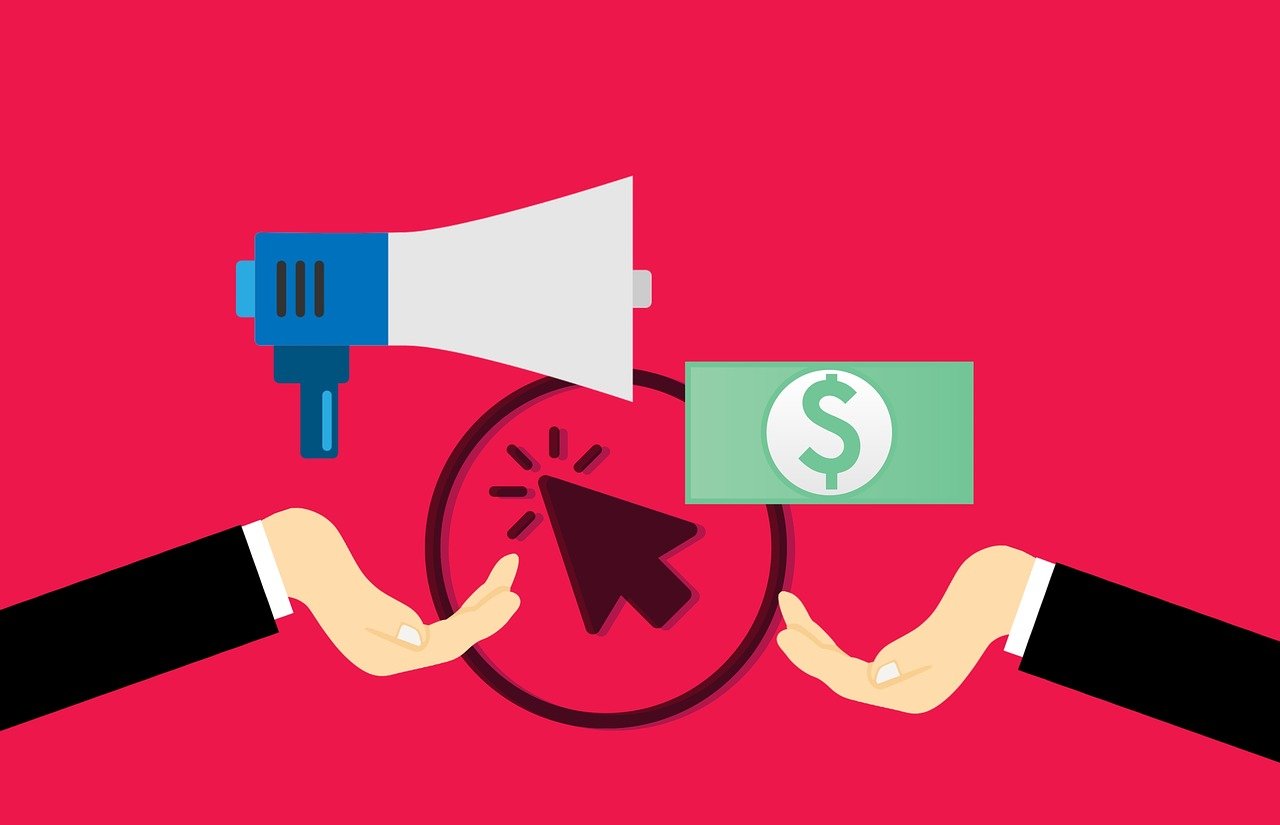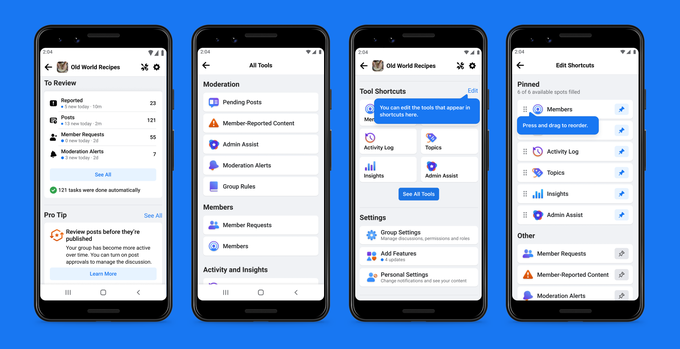MARKETING
4 Ways You’re Not Utilising AI Properly In Your PPC Campaigns

By now you might have seen a thousand articles telling you why you need to use AI (Artificial Intelligence) for PPC.
I should know. I’ve written a good few of these articles myself, preaching the benefits for businesses of all sizes. If you’re unfamiliar with them, let me remind you that AI is:
- Fast, able to save you time and give you more hours to get your work done.
- Smart, able to process a lot of data and interpret the results before you’ve even got them loaded.
- Able to work 24/7, giving you around the clock monitoring of your campaigns.
This is all well and good, but just using AI isn’t the end goal. There’s a difference between simply using something and doing it correctly.

It’s like convincing someone to finally use Facebook for their plumbing business, but all they post about is what meal they’re having for dinner each day. I’ll be surprised if that’s able to bring the business in.
Get the picture?
So while using AI is essential for PPC, simply having it doesn’t mean you’re taking advantage of the best AI has to offer. And this is a damn shame. If you’re putting the time and investment into AI, you need to make sure that you’re finding the right solutions for your company.
To help, we’ve outlined 4 common ways you might not be utilizing AI properly – and how to change it.
1. Not using AI in the right areas
The first thing we need to cover what part of your campaigns you’re actually using AI for. This one is difficult because there’s no straightforward and easy answer. It all depends on your business.
Take a look at your current management process. Find out where most of your time is being wasted and then find the AI tools that solve this problem for you.
For example, if most of your time is spent on interpreting data, you need a way to do this faster. If it’s copy and pasting data into reports, you need an automatic reporting tool. If it’s adjusting budgets, you need an automated rule to do this.
Now, be prepared that although advertising platforms like Google will have internal AI tools, it’s not your only option.
In fact, I’ve argued before that AI for PPC is only useful if you use external tools. It was a bold claim but backed up by the fact external tools are just smarter, faster and ahead of the game.
You’ve just got to find the right AI that actually works for your company.
2. Using inefficient PPC scripts
Before I get started on this one, rest assured I’m not about to mindlessly insult PPC scripts. I’m very much in favor of them. When they work, they’re a brilliant way to save time and give you hands-free management.
Ah, hands-free campaign management. That’s the sweet stuff I like to hear.
PPC scripts are pieces of code you can copy into your account to automatically run certain jobs for you, like being able to change your bidding depending on the weather in a particular area.
That’s a game-changer for those whose business relies on the weather, like an outdoor crazy golf course or ice-cream parlor.
 But… PPC scripts aren’t perfect. The code would have been written for one particular purpose, which means it might work for your exact needs. To do that, you need someone with javascript coding knowledge to go in and adapt it for you.
But… PPC scripts aren’t perfect. The code would have been written for one particular purpose, which means it might work for your exact needs. To do that, you need someone with javascript coding knowledge to go in and adapt it for you.
They’re also needed for when Google inevitably pushes out another update and your script no longer works. Yeah, it’s all fun and games in the PPC script world.
By all means, use PPC scripts as part of your AI solution. But make sure that they’re adapted to your company and aren’t wiped out by every tiny Google Ads update.
If you don’t have the on-team skills to edit the code, maybe you need to try tools that can do it all for you. Or, perhaps even consider using a PPC management agency who have the skills and resources to control it.
There’s no right choice for everyone. It’s all about figuring out yours.
3. You’re overcomplicating it
Data is the sweet nectar needed to correctly manage and optimize your campaigns. Without it, you may as well be trying to build a wall by throwing bricks in the dark.
But there is such a thing as too much data.
AI is amazing at gathering and interpreting data for you.
If you go into data overload, you’ll be hit with so many choices and options to consider that it can cripple you. Instead of using AI to easily solve one problem, you’ve made it so complicated that it creates 5 more.
As this article on keyword research pointed out, the sheer amount of data you can get from AI keyword generating tools can set you back. They can supply potentially billions of keywords – which are never going to be used.
You’ll be spoilt for choice and will have to dedicate more time deciding between things that weren’t even an option before.
If AI is making things more complicated then you need to cut back.
4. You’re too reliant on AI
With AI capabilities continually growing, there can be a temptation to just let it mindlessly run in the background. But you need to see the bigger picture. It’s no use mindlessly accepting every change that AI sends your way.
The curious part of you needs to ask why. Why do certain ads consistently perform better? What is it they do that the others don’t? Why do certain timeframes decrease your conversions?
As this article on Google Ads management pointed out:
“Google Ads management is all about being reactive: take onboard the changes and latest trends and adapt to them.”
In order to take onboard the changes, you need to understand why it happens. And no AI is going to do that for you.
 Curiosity and creativity are both inherently human traits that AI will not be able to replicate anytime soon. Make sure you use them at every chance you get to make your campaigns the best they can be.
Curiosity and creativity are both inherently human traits that AI will not be able to replicate anytime soon. Make sure you use them at every chance you get to make your campaigns the best they can be.
You can only make the best use of AI if you use it alongside your work, not to replace it.
Find the right AI solution for your business
If you want to make the best use of AI, you need to find the right tools for your processes.
Take a look at your current roadblocks and time-sinks. Find tools designed to help explicitly with this. Trial what works and see how much time it saves. Ensure it’s not creating more problems than it solves. Then use this time and data to better your strategies and campaigns. Don’t just rely on AI to fix everything for you.
The bottom line? AI and humans have to work together. Finding this balance is the key to your success.
MARKETING
A Recap of Everything Marketers & Advertisers Need to Know

When rumors started swirling about Twitter changing its name to X, I couldn’t believe it at first. But then, in July 2023, as I searched for my favorite blue icon on the phone, I found a black icon instead. It had actually happened!
MARKETING
The key to correcting the C-suite trust deficit

Take a moment to search “CMO tenure” and you’ll find a wide variety of content discussing the short tenure of CMOs and how it’s among the shortest of roles in the C-suite. If you dive deeper, you’ll find that CEOs don’t seem to trust CMOs.
Boathouse’s CMO Insights study (registration required) noted several sobering conclusions:
- 34% of CEOs have great confidence in their CMOs.
- 32% of CEOs trust their CMOs.
- 56% of CEOs believe their CMO supports their long-term vision.
- And only 10% of CEOs believe their CMO puts the CEO’s needs before their own.
If these statistics also apply to the CMO’s entire organization, then it’s clear we have a trust problem with marketing leadership.
If you haven’t read Patrick Lencioni’s “The Five Dysfunctions of a Team,” I consider it required reading for anyone in any leadership role. In his book, Lencioni builds a pyramid of dysfunctions that need to be addressed for a team to succeed. The foundational dysfunction — with which one cannot build a successful team — is “absence of trust.” We see it at scale with marketing organizations today.
Introducing objectivity through data
In “Hamlet,” Shakespeare writes, “There is nothing either good or bad, but thinking makes it so.” Each organization that makes up a company looks at the company from a different perspective. What marketing sees as positive, finance may see as negative. But who’s right? No one.
Usually, there is no objectivity because leadership comes up with an idea and we execute it. It’s like the fashion proverb “Beauty is in the eye of the beholder.” Unfortunately, we’re going to struggle to run a profitable organization if it’s run like a fashion show.
Therefore, we need to introduce objectivity to how we work. Leadership needs to come together to agree on goals that align with the goals of the broader organization. One element of this conversation should be an acknowledgment that this is turning a ship.
Often leaders — especially those without marketing backgrounds — are likely to expect instant gratification. It’s going to take time to turn the ship and you and your team would do well to set reasonable expectations right away.
Dig deeper: KPIs that connect: 5 metrics for marketing, sales and product alignment
Aligning goals and metrics across the organization
With goals in hand, we need to assign metrics to their progress and agree on the source(s) of truth. Once these objective measures are in place, perspective doesn’t matter. 2 + 2 = 4 regardless of whether you’re in HR or accounting.
Every public road has a speed limit and whether you’re in compliance with it has nothing to do with your perspective. If you’re above it, you’re wrong and subject to penalties. Referring to the fashion example, it’s not a fashion show where some people like a dress and others don’t.
By using data to objectively measure marketing’s progress within the organization and having the rest of the leadership buy into the strategy, we build trust through objectivity. Maybe the CEO would not have chosen the campaign the marketing team chose.
But if it was agreed that a >1 ROAS is how we measure a successful campaign, it can’t be argued that the campaign was unsuccessful if the ROAS was >1. In this example, the campaign was an objective success even if the CEO’s subjective opinion was negative.
Data-driven campaign planning
Within the marketing organization, campaigns should always be developed with measurement top of mind. Through analysis, we can determine what channels, creative, audiences and tactics will be most successful for a given campaign.
Being able to tell the leadership team that campaigns are chosen based on their ability to deliver measured results across metrics aligned to cross-departmental goals is a powerful message. It further builds trust and confidence that marketing isn’t run based on the CMO’s subjective opinions or gut decisions. Rather, it’s a collaborative, data-driven process.
For this to be successful, though, it can’t just be for show, where we make a gut decision and direct an analyst to go find data to back up our approach. This would be analytics theater, which is a perversion of the data. Instead, tell the analyst what you think you want to do and ask them to assess it.
For the rest of the organization’s leadership, ask questions when the marketing team presents a campaign. Find out how they came up with the strategy and expect to hear a lot about data — especially the metrics you all agreed would support the company’s overarching goals.
Dig deeper: 5 failure points of a marketing measurement plan — and how to fix them
Data literacy: Building credibility through transparency
Building trust doesn’t happen overnight, but a sustained practice of using data to drive marketing leadership’s decisions will build trust if the metrics ladder up to the organizational goals and all of leadership is bought into the measurement plan.
Over time, this trust will translate into longer tenure and more successful teams through building the infrastructure needed to tackle Lencioni’s five dysfunctions.
Opinions expressed in this article are those of the guest author and not necessarily MarTech. Staff authors are listed here.
MARKETING
How Tagging Strategies Transform Marketing Campaigns


As a marketer, I understand how today’s marketing campaigns face fierce competition. With so much content and ads competing for eyeballs, creating campaigns that stand out is no easy task.
That’s where strategies like tagging come in.
It helps you categorize and optimize your marketing efforts. It also helps your campaigns cut through the noise and reach the right audience.
To help you out, I’ve compiled nine ways brands use a tagging strategy to create an impactful marketing campaign.
Let’s get to it.
How Brands Use a Tagging Strategy
Tagging involves using keywords or labels to categorize and organize content, products, or customer data. You attach tags to specific items or information to make searching, sorting, and analyzing data easier.
There are various types of tags, including meta tags, analytics tags, image tags, hashtags, blog tags, and more.
So, how do brands use a tagging strategy to make their marketing campaigns stand out?
Improve Social Media Engagement
With over 5 billion users, social media provides an easy way to connect with your audience, build relationships, and promote your offerings.


Use a tagging strategy to boost social media interactions. Consistently use hashtags that align with current trends and topics. This encourages people to interact with your content and boosts content visibility.
You can also use tags to monitor brand mentions of your products or your industry. This allows you to engage with your audience promptly.
Consider virtual social media assistants to streamline your tagging strategy. These AI-driven tools can suggest relevant hashtags, track mentions, and automate responses. Implementing them can save time and resources while ensuring consistent engagement across your socials.
Build a Personal Brand on LinkedIn
LinkedIn is the world’s largest professional networking platform, with over 1 billion members across 200 nations. It offers excellent opportunities for individuals and businesses to build and nurture their brands.


However, simply creating a professional profile isn’t enough to build a personal brand on LinkedIn.
Use various tags to increase your visibility, establish thought leadership, showcase expertise, and attract the right connections. For instance, use skill tags to showcase your expertise and industry tags to attract connections and opportunities within your industry. Use certification tags to help showcase your expertise and credibility to potential employers or clients.
Facilitate Customer Segmentation and Personalization
Personalization matters—more so in today’s data-driven world. In fact, 65% of consumers expect your brand to adapt to their changing preferences and needs.
To meet this expectation, consider using a tagging strategy.
Segment your customers based on shared characteristics, such as demographics, interests, purchase history, cart abandonment, and behavior.
Here’s a summary of the steps to customer segmentation.


With your customer segments ready, use tags to tailor your marketing messages and offerings to specific segments. Imagine sending targeted email campaigns based on what your customers need. That’s the power of segmentation and tagging in action!
Enhance SEO and Content Discoverability
Tagging content can have a profound impact on search engine optimization (SEO) and content discoverability. When users search for specific topics or products, well-tagged content is more likely to appear in search results, driving organic traffic to your website.
Additionally, tags can help you analyze the most popular topics with your readers. Then, the results of this analysis can help you adjust your content strategies accordingly.
And get this— certain AI tools can help analyze your content and suggest relevant tags and keywords. Using these tools in addition to a tagging strategy can help optimize your SEO strategies and boost content discoverability.
Partner with the Right Influencers
Influencer marketing has become a go-to marketing approach for modern brands. Recent stats show that 85% of marketers and business owners believe influencer marketing is an effective marketing strategy.
But how do you find the perfect influencer for your campaign?
Utilize tags to identify influencers who are relevant to your niche. Beyond this, find influencers who align with your brand values and target audience.
Additionally, look for influencers who use hashtags that are relevant to your campaigns. For instance, fashion influencer Chiara Ferragni uses #adv (advertising) and #ghd (good hair day) hashtags in this campaign.


Monitor industry-specific hashtags and mentions to discover influential voices and build profitable relationships with them.
Track Hashtag Performance
Tracking your hashtag performance helps you understand your campaigns’ engagement, reach, and effectiveness.
To achieve this goal, assign special hashtags to each marketing project. This helps you see which hashtags generate the most engagement and reach, enabling you to refine your tagging strategy.
Here’s an example of a hashtag performance report for the #SuperBowl2024.


This curated list of hashtag generators by Attrock discusses the top tools for your consideration. You can analyze each and choose the one that best fits your needs.
Categorize Content Accordingly
The human attention span is shrinking. The last thing you want is for your audience to have difficulty in finding or navigating your content, get frustrated, and bounce.


Untagged content can be difficult to navigate and manage. As any marketer knows, content is important in digital marketing campaigns.
To categorize your content, identify the main categories by topics, themes, campaigns, target audiences, or product lines. Then, assign relevant tags based on the categories you’ve identified. After that, implement a consistent tagging strategy for existing and new content.
Organizing your content using tags can also help streamline your content management workflow. Most importantly, readers can easily find the content they’re looking for, thereby boosting overall user experience, engagement, and conversions.
Boost Your Email Marketing Strategy
Email marketing remains a powerful marketing tool in today’s digital world. It’s also another area where brands use a tagging strategy to directly reach their target audience.
Use tags to segment your email list and personalize your marketing messages. Then, you can send targeted emails based on factors like purchase history, interests, and demographics.
Personalization can significantly improve open rates, CTRs, and overall engagement and conversion rates. It’s a simple yet impactful strategy to make your email marketing strategy more effective.
Plus, you can use tags to track how well your emails perform with each group. This helps you understand what content resonates best with your audience and provides insight on how to improve your emails going forward.
Enhance Analytics and Reporting
Every marketer appreciates the immense value of data. For brands using tagging strategies, tags are powerful tools for gathering valuable data.
Analyze how users interact with your tagged content. See which tags generate the most clicks, shares, conversions, and other forms of engagement. Gain insight into audience preferences and campaign effectiveness.
This granular data about your marketing efforts allow you to make data-driven decisions, allocate resources effectively, and refine your marketing strategies.
Final Thoughts
There isn’t a single correct way for brands to use a tagging strategy in marketing. You can use a tagging strategy however you see fit. However, the bottom line is that this strategy offers you a simple yet powerful way to create attention-grabbing and unique marketing campaigns.
Fortunately, tagging strategies are useful across various marketing initiatives, from social media and email marketing to SEO and more.
So, if you’re ready to elevate your marketing campaign, build a strong brand presence, and stand out among the competition, consider employing effective tagging strategies today.
-
SEARCHENGINES7 days ago
Daily Search Forum Recap: April 29, 2024
-
SEARCHENGINES6 days ago
Daily Search Forum Recap: April 30, 2024
-

 MARKETING6 days ago
MARKETING6 days agoHow To Develop a Great Creative Brief and Get On-Target Content
-

 SEO7 days ago
SEO7 days agoGoogle’s John Mueller On Website Recovery After Core Updates
-

 WORDPRESS6 days ago
WORDPRESS6 days ago13 Best Fun WordPress Plugins You’re Missing Out On
-

 SEO5 days ago
SEO5 days agoWhy Big Companies Make Bad Content
-

 SEO5 days ago
SEO5 days agoHow To Drive Pipeline With A Silo-Free Strategy
-

 SEO6 days ago
SEO6 days agoOpenAI To Show Content & Links In Response To Queries











